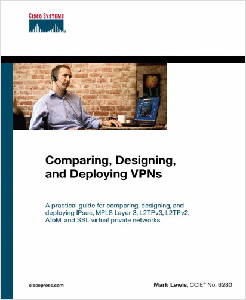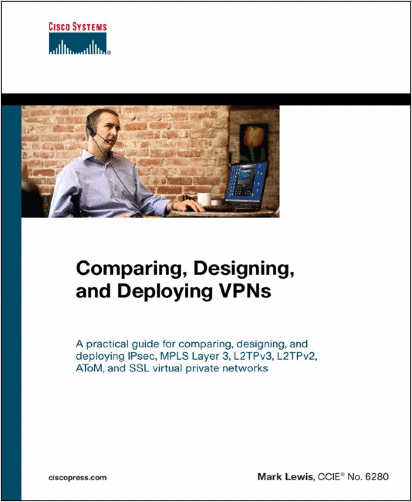Comparing, Designing, and Deploying VPNs by Mark Lewis
Published by Cisco Press | Genre: Networking Technology | ISBN: 1587051796 | Pages: 1080 | Edition: 1st | 39.54 mb
Virtual private networks (VPNs) enable organizations to connect offices or other sites over the Internet or a service provider network and allow mobile or home-based users to enjoy the same level of productivity as those who are in the same physical location as the central network. However, with so many flavors of VPNs available, companies and providers are often hard pressed to identify, design, and deploy the VPN solutions that are most appropriate for their particular network architecture and service needs. Comparing, Designing, and Deploying VPNs brings together the most popular VPN technologies for convenient reference. The book examines the real-world operation, application, design, and configuration of the following site-to-site VPNs: Layer 2 Tunneling Protocol version 3 (L2TPv3)-based Layer 2 VPNs (L2VPN); Any Transport over MPLS (AToM)-based L2VPN; MPLS Layer 3-based VPNs; and IP Security (IPsec)-based VPNs. The book covers the same details for the following remote access VPNs: Layer 2 Tunneling Protocol version 2 (L2TPv2) VPNs; L2TPv3 VPNs; IPsec-based VPNs; and Secure Socket Layer (SSL) VPNs. Through the operation, application, and configuration details offered in each chapter, you’ll learn how to compare and contrast the numerous types of VPN technologies, enabling you to consider all relevant VPN deployment options and select the VPN technologies that are most appropriate for your network. Comparing, Designing, and Deploying VPNs begins with an introduction of the types of VPNs available. Subsequent chapters begin with an overview of the technology, followed by an examination of deployment pros and cons that you can use to determine if the particular VPN technology is appropriate for your network. Detailed discussion of design, deployment, and configuration make up the heart of each chapter. Appendix A offers insight into two multipoint emulated LAN services that can be deployed over a MAN or WAN: Virtual Private LAN Service (VPLS) and IP-only Private LAN Service (IPLS). If you are a network architect, network engineer, network administrator, an IT manager, or CIO involved in selecting, designing, deploying, and supporting VPNs, you’ll find Comparing, Designing, and Deploying VPNs to be an indispensable reference. This book is part of the Cisco Press® Networking Technology Series, which offers networking professionals valuable information for constructing efficient networks, understanding new technologies, and building successful careers.
http://rapidshare.de/files/29798949/Agr001.rar



